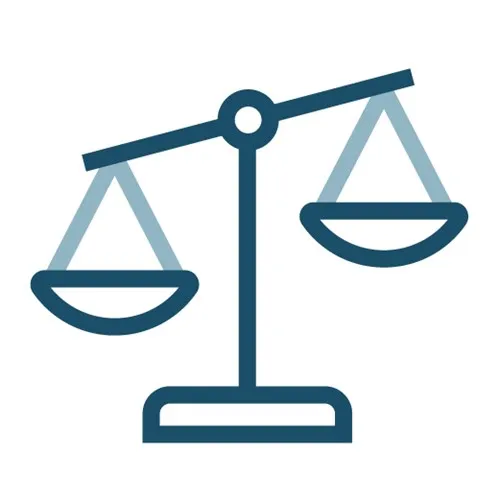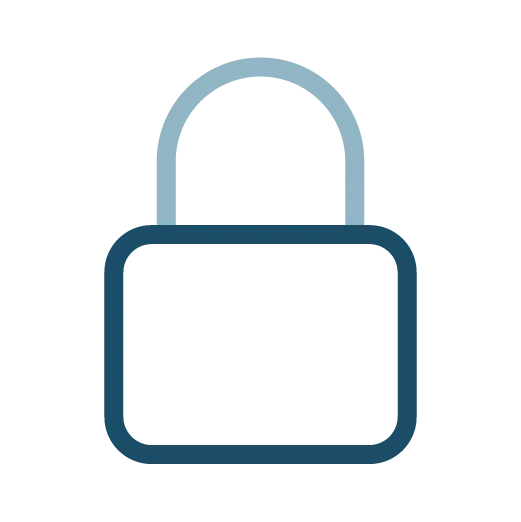Declaring Bankruptcy in Scotland (Sequestration)
Scroll to learn more

How could bankruptcy help you?
Bankruptcy, or sequestration in Scotland, is a debt solution that allows you to take back control of your finances. Often, people associate the word ‘bankruptcy’ with negative implications only; however, bankruptcy can also be incredibly freeing to people who have become overwhelmed with debt and need to get back on track. If it is unlikely you will be able to repay your debts in full and if it’s also unlikely creditors will agree to a trust deed, bankruptcy may be an option for you. In a bankruptcy, you will only pay what you can afford towards your debt over a fixed period of usually four years. We will contact your creditors to inform them you have been made bankrupt, and give you legal protection from any action they may wish to take to recover the debt. Whilst you will be required to pay what you can afford for four years, if you have co-operated with your Trustee, you may be discharged after one year. This means that the restrictions of bankruptcy would no longer apply. Of course, the agreed payments would need to continue throughout the four-year period. When you contact Cleanslate for help with bankruptcy, our advisers will ask you some simple questions to fully understand your financial circumstances. Applying for bankruptcy is a serious step to take. If bankruptcy is not right for you, we will advise you of other options that might be more suitable.
How to go bankrupt in Scotland
There are two ways to be declared bankrupt in Scotland.
- Applying for bankruptcy.
- Your creditors make you bankrupt.
Declaring yourself Bankrupt
If you want to get help before creditors act, you could declare yourself bankrupt. It is often the most effective way to deal with problem debt. To declare yourself bankrupt in Scotland you must:
- Have not been sequestrated (declared bankrupt) in the last five years.
- Have lived in Scotland within the last 12 months
- Not be in a protected trust deed.
In addition to the above, you will need to provide evidence that you are unable to pay back your debt. At Cleanslate, we can do this by providing a Certificate for Sequestration, a formal document which verifies that you are unable to pay your debts as they fall due.
How creditors can make you bankrupt
In the event you have been unable to pay your debts to a creditor, they may begin a legal process to make you bankrupt. Creditors cannot make you bankrupt on their own, and the debt owed must be at least £3,000. The process creditors usually follow to make a debtor bankrupt in Scotland is as follows.
1. Decree from the Sheriff Court
Before anything else, the creditor must apply to the Sheriff Court providing evidence that you owe them money and that you have not paid them. If successful, the court will grant a Decree – legal confirmation that a debt exists between you and your creditor, and that it must be paid.
2. Charge for Payment
Once a Decree has been granted, your creditor can instruct a Sheriff Officer to serve you with a Charge for Payment. A Charge for Payment is a legal document stating that your debt must be paid in full within 14 days otherwise your creditor can enforce payment. In some instances, you may be able to apply for time to pay.
3. Apparent Insolvency
Once the time limit on your Charge for Payment runs out, it will be considered an Expired Charge for Payment. Once expired, this constitutes Apparent Insolvency meaning the creditor is then able to takes steps to enforce the debt.
4. Bankruptcy Petition
The creditor can then petition the court to make you bankrupt and nominate either an Insolvency Practitioner or the Accountant in Bankruptcy to act as Trustee.
The Cleanslate Process
At Cleanslate, we’ve been helping people with their debt problems for over 20 years, with more than 20,000 people helped so far. Our tried and trusted process ensures every single client gets the best advice possible, specific to their own circumstances.
Step 1: Initial Consultation
When you first call our advice team, we will perform an initial consultation, this can be done over the phone or at any of our offices. This is a free, no obligation conversation to understand more about you, your debt, and your ability to repay it.
Step 2: Data Gathering
When you’re comfortable to proceed, we’ll take a deeper dive into your circumstances. Our goal here is to understand how much debt you have, what income and assets you have available to you and, most importantly, what you can afford (if anything) to pay back to your creditors.
Step 3: Find a Solution
Based on all the information available, your money adviser will discuss the debt solutions that may be appropriate to your circumstances. This might be a Debt Arrangement Scheme (DAS), Protected Trust Deed or Sequestration (Bankruptcy).
Step 4: Paperwork
Once you’re happy to move forward with the chosen debt solution, in this case, Bankruptcy, your money adviser with prepare the paperwork for you. Your adviser will then provide a formal certificate (Certificate for Sequestration) verifying that you are unable to pay your debts as they fall due. Once the application fee has been paid, your adviser will submit your bankruptcy application to the Accountant in Bankruptcy.
Step 5: Enjoy peace of mind
The paperwork is done. Your application will now be reviewed by the Accountant in Bankruptcy. Once accepted and entered onto the Register of Insolvencies, your bankruptcy will begin.
Advantages & Disadvantages of a bankruptcy
What are the advantages of a bankruptcy?
There are numerous advantages of bankruptcy, a few of which are:
- You will only pay back what you can afford.
- On successful completion, your remaining debt will be written off.
- We will deal with creditors on your behalf.
- We will agree with you how your assets (such as your home and car) are affected in advance.
- Existing earnings arrestments will be stopped after bankruptcy has been awarded.
What are the disadvantages of a bankruptcy?
- Your bankruptcy will be visible on your credit file for six years. This may impact your ability to obtain credit for a period after you have been discharged from the bankruptcy.
- Your home may be affected in a bankruptcy. Control of your assets will be passed to your Trustee. It is not possible to exclude a property from a bankruptcy. Understanding the implications for your property is a high priority and we will talk to you about this in detail. There may be more options for dealing with your property in a trust deed and our advisers will talk these through with you when you call us.
- You cannot act as a Member of Parliament, a Justice of the Peace, a member of a school board or local council. You also cannot be a director of a limited company or be involved in the day-to-day financial management of a company. If you are concerned this may affect you, simply ask one of our advisers when you contact us.
- You will be required to pay your full disposable income in sequestration for 48 months. If your circumstances change, you must keep your Trustee informed. This means your contribution payment may increase if your circumstances improve. However, rest assured you will only ever be asked to pay what you can afford.
- The Trustee has a duty to safeguard the interest of creditors of an insolvent person and therefore has an obligation to investigate past financial transactions. If the Trustee considers your conduct has been dishonest or blameworthy in some way, either before or during the bankruptcy, they may recommend restrictions on your conduct which can last between 2 and 15 years.
Frequently asked questions
What is the Debt Arrangement Scheme?
The Debt Arrangement Scheme (DAS) has been put in place by the Scottish Government. It allows people who are able to repay their debts in full given enough time, the ability to do just that. If a DAS is approved you will have protection from your creditors, including freezing interest and charges, whilst you make payments under the DAS.
In DAS you propose a monthly payment to your creditors, which would allow your debts to be paid in full over time. If your creditors agree then the DAS will be approved.
In addition to you and your creditors, there are three parties involved in the administration of a DAS:
- The Continuing Money Adviser, who provides initial money advice, assists in preparation and submission of an application for the approval of a DAS and provides ongoing support throughout the term of the DAS, including annual reviews of financial circumstances. When you apply for a DAS through Cleanslate, we take on the role of your Continuing Money Adviser.
- The Payment Distributor, who distributes funds to creditors each month following your monthly payment being made.
- The DAS Administrator, who is responsible for the approval of debt payment programmes (DPPs), approving money advisers and payments distributors and maintaining the DAS Register and eDEN (the online case administration system used for administration of all DPPs under DAS).
Once a DAS is approved, the costs of administering the scheme are borne by your creditors. So, for every £1 you pay into DAS, 78p is distributed amongst your creditors, 2p is paid as a fee to the DAS Administrator, and the remaining 20p is paid as fees split between your Continuing Money Adviser and your Payment Distributor.
On successful completion of a DAS, creditors will have received 78% of the debt owed to them. You cannot be held liable for any further payments towards debts included in the DAS, or any interest, fees, penalties or charges which would have accrued during the scheme.
Who can apply for the Debt Arrangement Scheme?
The Debt Arrangement Scheme is available to any individual (or couple) living in Scotland struggling with unsecured debt (with a small number of exceptions). You cannot apply for the Debt Arrangement Scheme if:
- You are in a protected trust deed.
- You have been declared bankrupt, and have not yet been discharged.
- You are subject to a time to pay direction or order.
- You are paying debts under a conjoined arrestment order.
What debts are included?
The Debt Arrangement Scheme covers all of your unsecured debts, for example credit cards, store cards and catalogue debts, overdrafts, unsecured loans, payday loans and debt owed to HMRC. It also includes arrears on your mortgage, rent, utilities or council tax.
Will people find out?
Will my house, car and personal possessions be affected?
Can I still have a bank account?
You can still use a bank account; however you won’t be able to use an overdraft facility.
Will my credit file be affected?
Your credit file will be updated to show that you have entered into a debt payment plan. This means you won’t be able to obtain credit while you’re in this plan, and may find it difficult to do so for a period after this has ended. You may however find that you have less need to borrow anyway, having taken back control of your finances.
Are there any fees?
There is no upfront fee required to apply for a DAS. This is the same whether you apply to the scheme through a private sector organisation such as Cleanslate, or through a free sector advice agency such as a Citizens Advice Bureau or debt charity.
Once a DPP is approved, the costs of administering the scheme are borne by creditors. So, for every £1 you pay into DAS, 78p is distributed amongst your creditors, 2p is paid as a fee to the DAS Administrator, and the remaining 20p is paid as fees split between your Continuing Money Adviser and your Payment Distributor.
[insert company name] would receive ongoing fees as a Continuing Money Adviser under DAS. Details of the amount of this fee would be explained to you in the engagement letter issued prior to making an application for DAS.
To find out more about managing your finances and receive free debt advice, you can visit Money Helper.
What is Money Helper?
To find out more about managing your money and getting free advice, you can visit Money Helper, an independent service set up to help people manage their money.
Debt solutions

Debt Arrangement Scheme
When debts become difficult to handle, the Debt Arrangement Scheme gives you the breathing space to repay your debts in full with one monthly affordable payment and interest frozen.

Protected Trust Deed
If you can’t afford to repay your debts in full, a protected trust deed allows you to repay what you can over an agreed period of time. Once completed, the remaining balance is written off.
Not sure which solution is right for you?
